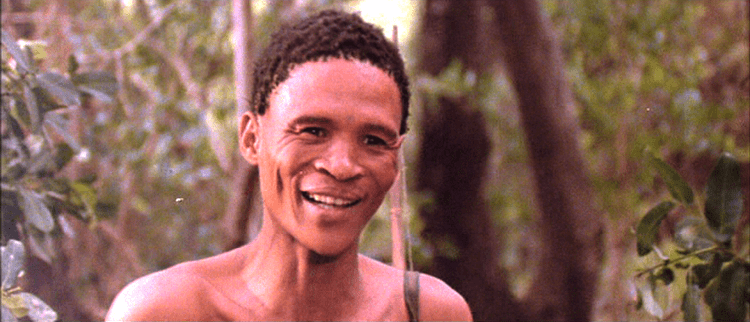


01/23/2020
As I mentioned yesterday, Carl Zimmer’s article in The New York Times on the new ancient DNA paper with its ho-hum title, Ancient DNA from West Africa Adds to Picture of Humans’ Rise, is a model of how to construct articles upside down to bore complacent NYT subscribers with the opening paragraphs before revealing the unsettling details toward the end. Carl doesn’t mention the word “pygmy” until his 18th paragraph and the word “ghost” until the 24th paragraph. But then, long after most subscribers, have stopped reading, assuming that the gist of the article is Science Proves Trump Voters Stupid Once Again, Zimmer finally unveils some wild stuff:
Dr. Prendergast wondered if DNA from Shum Laka [in Cameroon] would show a kinship with living Bantu people….
In the end, it did. The researchers recovered abundant DNA from four individuals, two of whom were buried in the rock shelter 8,000 years ago, and another pair 3,000 years ago.
One of the 8,000-year-old skeletons was especially rich with human DNA. “It’s of a quality of a modern medical genome,” said David Reich, a Harvard Medical School geneticist and a co-author with Dr. Prendergast.
To Dr. Prendergast’s surprise, none of the people at Shum Laka were closely related to Bantu speakers at all. In fact, they had a strong kinship to the Aka, a group of hunter-gatherers with a pygmy body type who live today in rain forests 1,000 miles to the east.
The Aka or Bayaka Pygmies still speak their own language, unlike the more famous Mbuti Pygmies, who have fully adopted the languages of their Bantu overlords.
To make sense of this paradox, the researchers carried out a large-scale comparison of all the ancient African DNA gathered so far, along with living people from across Africa and beyond. The team found a scenario that best explains how different groups of Africans ended up with their particular combinations of DNA.
Dr. Reich and his colleagues can trace the major lineages of people back to common ancestors who lived in Africa between 200,000 and 250,000 years ago.
“It seems we have four lineages splitting at the same time,” said Mark Lipson, a postdoctoral researcher at Harvard and an author of the new study.
One lineage passed down their DNA to living hunter-gatherers in southern Africa.
I.e., the small yellowish-brown Bushmen and Hottentots or Khoi-San.
A second group were ancestors of the Aka and other central African hunter-gatherers.
I.e., the Pygmies. As far as I know, there is no politically correct name for Pygmies, the way white people think you should use Khoi-San instead of Bushman and Inuit instead of Eskimo. (In reality, it’s all very complicated.) So Carl Zimmer is having a hard time bringing himself to call Pygmies Pygmies.
A third group became hunter-gatherers in East Africa, as evidenced by the fact that many living Africans in that region have inherited some of that DNA.
The fourth group, which Dr. Reich and his colleagues call “Ghost Modern,” is far more mysterious.
Ghost Modern … cool.
Of course, practically no subscribers got 24 paragraphs into the article when the Big News is finally announced.
The ancient Shum Laka people have a substantial amount of Ghost Modern ancestry. So does the ancient Mota man from Ethiopia. But ancient remains from Morocco and South Africa had none. Today some people in Sierra Leone have a tiny trace of Ghost Modern ancestry, the researchers found.
My impression is that the Ghost DNA in modern West African Bantus is more than tiny: More like 5% or more, which would be more than Europeans have Neanderthal ancestry.
It’s possible that the Ghost Moderns were hunter-gatherers who lived across the southern edge of the Sahara. They remained isolated from other Africans for tens of thousands of years. Later, they bred with people from other groups at the eastern and western edges of their range.
Most people in Africa — and the rest of the planet — can trace much of their ancestry to the East African hunter-gatherers. Less than 100,000 years ago, this group split into new lineages.
One group gave rise to many of today’s East African tribes. Another group included the Mota man. They were closely related to the people who expanded east out of East Africa and into the rest of the world.
A separate group of East Africans moved west, encountering and mixing with Central African hunter-gatherers and eventually becoming the first West Africans. The people of Shum Laka may be the descendants of this group.
Many thousands of years passed before a different group of the West Africans gave rise to the Bantu people. Their population discovered agriculture, grew and took over larger areas of land.
In other words, most sub-Saharan Africans today are descended from Bantus, who are, historically, a genocidal conqueror race rather like the Yamnayas-Aryans of Eurasia.
But the Bantu farmers didn’t swiftly drive hunter-gatherers to oblivion. The Shum Laka people survived for at least 1,000 years in the heart of Bantu country.
But after a couple thousand years, the society reached a tipping point, and the hunter-gatherers were marginalized. East African tribes that also began farming and grazing livestock applied additional pressure.
It’s possible that this pressure brought an end to many groups of hunter-gatherers, including the Mota and the Shum Laka — perhaps even the ancient Ghost Modern people.
The surviving hunter-gatherers interbred with neighboring farmers. The new study finds that the Aka, for instance, can trace 59 percent of their ancestry to the Bantu.